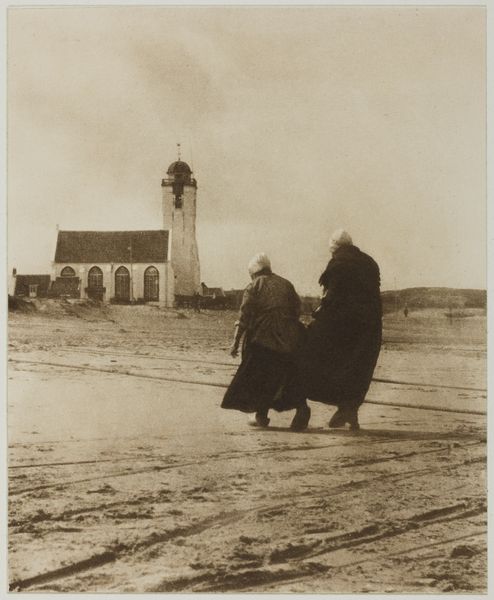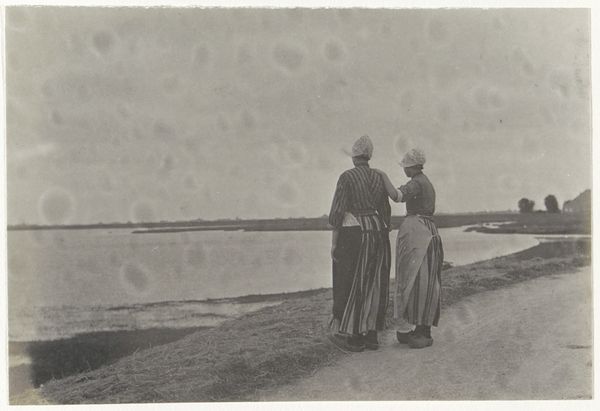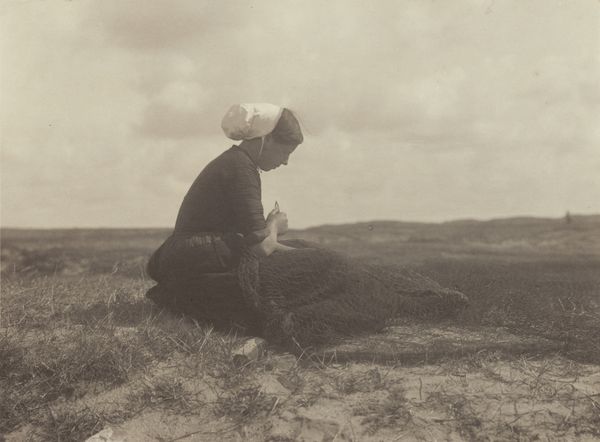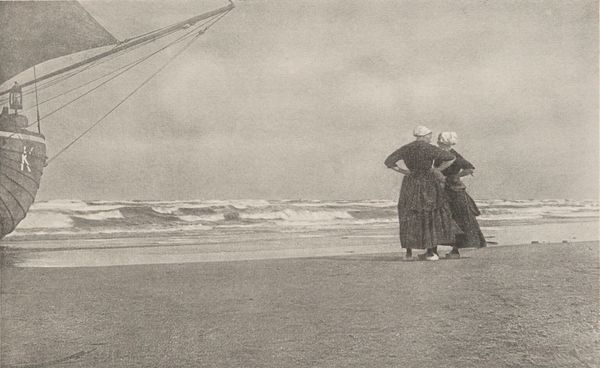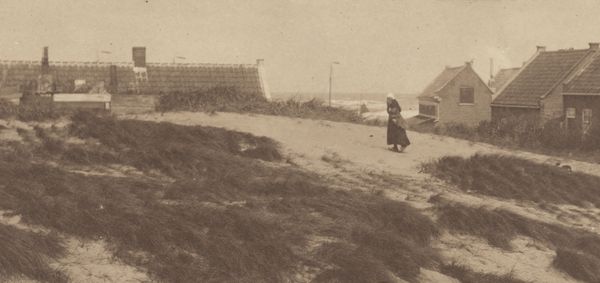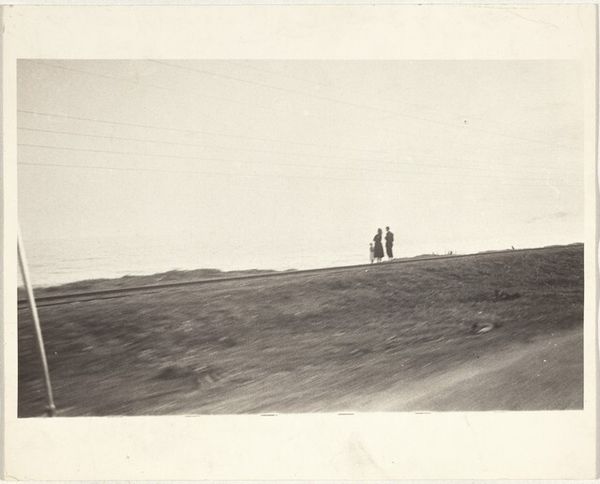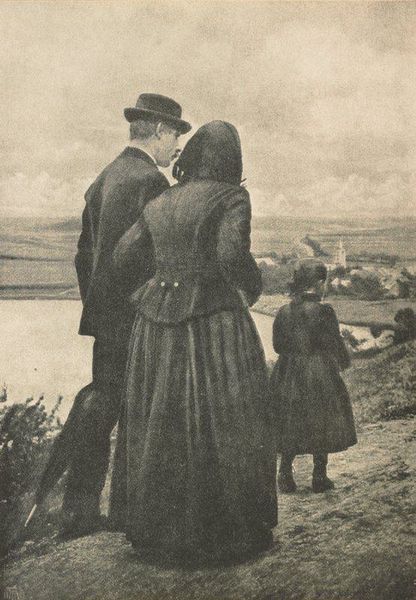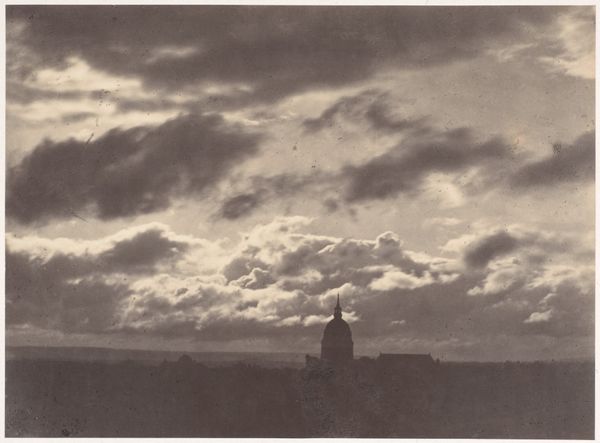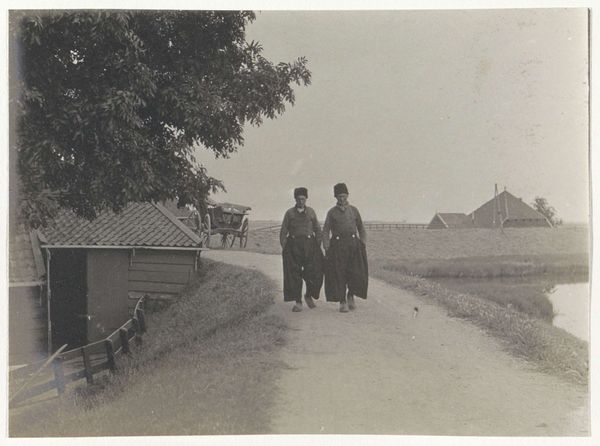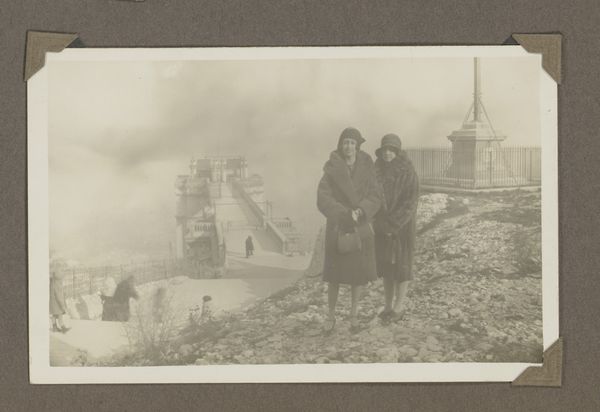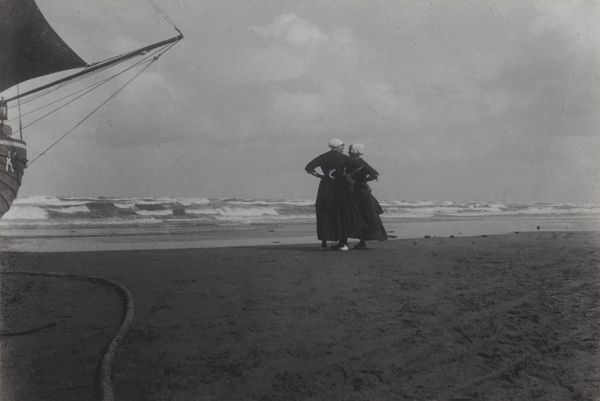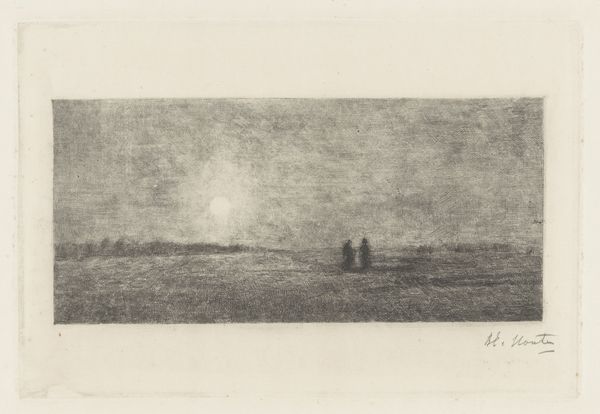
print, photography, gelatin-silver-print
#
black and white photography
#
pictorialism
# print
#
landscape
#
photography
#
gelatin-silver-print
#
monochrome photography
#
19th century
#
genre-painting
#
monochrome
Dimensions: image: 18.9 × 13.7 cm (7 7/16 × 5 3/8 in.) sheet: 29.2 × 22.4 cm (11 1/2 × 8 13/16 in.) mount: 38 × 27.9 cm (14 15/16 × 11 in.) mat: 63.7 × 47.1 cm (25 1/16 × 18 9/16 in.)
Copyright: National Gallery of Art: CC0 1.0
Curator: Alfred Stieglitz captured this gelatin-silver print, possibly between 1894 and 1895, titled "Hour of Prayer." Editor: There’s such a stillness to this. Despite the overcast sky, there's something comforting about the composition, almost like a memory fading in sepia tones. Curator: That "fading" is significant. Stieglitz was deeply embedded in the Pictorialist movement, emphasizing the artist's manipulation of the photographic process to achieve painterly effects. He blurred lines – literally and figuratively – between photography and traditional fine arts. Editor: The texture of that sand intrigues me, the way the tracks run through it and how they imply labor but lead to prayer. Was this about documenting the realities of these women's lives, their physical toil set against the promise of spiritual respite? Curator: It absolutely resonates with that duality. The two women are the subject, aren't they? I mean, yes, that church is in the background, a solid monument in this composition, but their work informs everything around them, the culture itself. Their presence makes that monument possible. How are they situated, both physically on that shore and within the broader narratives of turn-of-the-century labor, faith, and the quiet strength of women? Editor: And think about gelatin-silver printing, that technique he's employing. It suggests precision, control, but the tones achieve that soft, almost hazy quality. This isn't just a 'snapshot'; it is crafted and, as you point out, carefully manipulated. The medium isn't invisible; the technique informs everything we are talking about. Curator: Exactly. What visual language is he using to depict these women as pious figures in their landscape, especially juxtaposed with industrializing world of 19th-century Europe? Is Stieglitz acknowledging the invisible labor of women who sustain faith and family, grounding the foundations of society with quiet but undeniable force? Editor: I suppose if we return to where we started, with this overall stillness, this feels not like resignation but deep resolve. Curator: An unwavering presence. It reframes who constitutes "greatness" within the human experience. Editor: Beautifully put. Thank you for sharing this. It makes you look beyond that first impression and deep into a broader understanding.
Comments
No comments
Be the first to comment and join the conversation on the ultimate creative platform.
